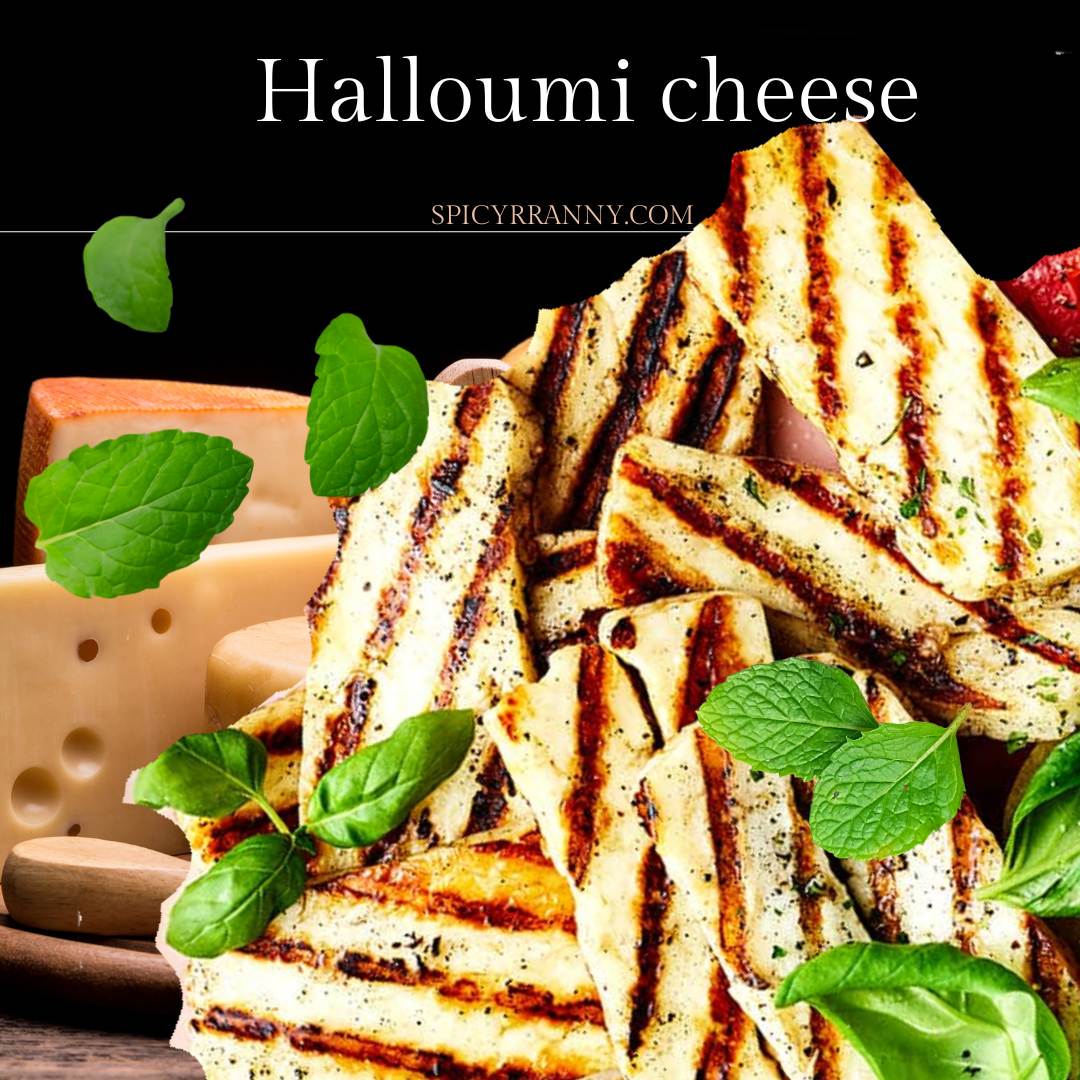Halloumi cheese is a traditional cheese that hails from the Mediterranean island of Cyprus. It is known for its unique texture, salty flavor, and ability to retain its shape when cooked. This semi-hard cheese is made primarily from a mixture of goat and sheep’s milk, although cow’s milk is sometimes used. Originating as early as the Medieval Byzantine period, halloumi cheese has since become a favorite ingredient worldwide.
Table of Contents
How to Use Halloumi Cheese in Everyday Cooking
Halloumi cheese is incredibly versatile and can be used in various dishes. Its firm texture makes it ideal for grilling, frying, or even baking. Grilled halloumi slices can be added to salads, sandwiches, or served on their own as a savory appetizer. For breakfast, halloumi cheese pairs wonderfully with eggs and vegetables. You can also dice it into cubes and add it to grain bowls or pasta dishes for extra flavor.
Delicious Halloumi Cheese Recipe to Try at Home
If you’re wondering how to make a simple yet flavorful dish with halloumi cheese, try this quick recipe:
Grilled Halloumi Cheese Salad Recipe:
Ingredients:
- 200g halloumi cheese
- Mixed salad greens
- Cherry tomatoes, halved
- Olive oil
- Lemon juice
- Fresh herbs (like mint or basil)
Instructions:
- Cut the halloumi cheese into thick slices.
- Heat a grill pan over medium heat and lightly oil it.
- Grill the halloumi slices for 2-3 minutes on each side until golden brown.
- In a bowl, combine salad greens, cherry tomatoes, and fresh herbs.
- Drizzle olive oil and lemon juice over the salad.
- Top with the grilled halloumi cheese and serve immediately.
Halloumi Cheese Nutrition Facts: What You Need to Know
Halloumi cheese is rich in essential nutrients, making it a tasty yet somewhat indulgent choice. It contains high levels of protein, calcium, and fat. On average, a 100g serving of halloumi cheese provides around 320 calories, 22g of fat, and 21g of protein. It also supplies your body with important minerals such as calcium and phosphorus, which support bone health.
Is Halloumi Cheese Healthy? Exploring the Health Benefits
Is halloumi cheese healthy? The answer depends on how it fits into your overall diet. While halloumi cheese is high in protein and calcium, which are essential for muscle and bone health, it is also relatively high in sodium and saturated fat. Moderation is key when enjoying this cheese. Pairing it with fresh vegetables and whole grains can help balance its nutritional impact.
Halloumi Cheese Calories: Understanding Its Nutritional Value
For those watching their calorie intake, it’s essential to be aware of halloumi cheese calories. As mentioned earlier, 100g of halloumi cheese contains about 320 calories. To reduce calorie consumption, consider slicing the cheese thinner or using it sparingly as a topping rather than a primary ingredient. Grilling instead of frying can also help maintain a healthier preparation.
Halloumi Cheese Substitute: Best Alternatives for Your Recipes
If halloumi cheese is not available, several substitutes can provide a similar taste and texture. Some of the best halloumi cheese substitutes include:
- Paneer: An Indian cheese with a mild flavor and firm texture.
- Queso Blanco: A fresh Latin American cheese that holds its shape when cooked.
- Feta (Grilled): While crumblier than halloumi, grilling feta can yield a similar savory experience.
- Kefalotyri: A Greek cheese with a salty taste and firm texture.
These substitutes work well in recipes that call for halloumi cheese, ensuring you can still enjoy delicious dishes.
Halloumi Cheese Near Me: Finding Local Stores and Suppliers
Finding halloumi cheese near you can be simple if you know where to look. Many large supermarkets now stock halloumi cheese in their specialty cheese sections. Additionally, Mediterranean and Middle Eastern grocery stores often carry authentic halloumi. If you prefer online shopping, specialty food websites frequently offer halloumi cheese for delivery.
Where to Buy Halloumi Cheese in Pakistan and Other Countries
If you are looking for halloumi cheese in Pakistan, it can be found at select gourmet food stores and high-end supermarkets in major cities such as Karachi, Lahore, and Islamabad. Some online grocery platforms also deliver imported halloumi cheese directly to your doorstep. Globally, stores like Whole Foods, Trader Joe’s, and Tesco commonly carry halloumi cheese.
Creative Halloumi Cheese Dishes for Food Enthusiasts
Halloumi cheese opens up endless possibilities for creative cooking. Here are a few unique ideas to elevate your meals:
- Halloumi Tacos: Substitute halloumi for meat in tacos, paired with avocado and spicy salsa.
- Halloumi Burger: Use a grilled halloumi slice as a patty in a vegetarian burger.
- Halloumi Skewers: Thread cubes of halloumi cheese with vegetables for a colorful and tasty appetizer.
- Halloumi Stuffed Peppers: Fill bell peppers with halloumi, quinoa, and herbs for a wholesome meal.
- Halloumi Fries: Coat halloumi sticks with breadcrumbs and bake or fry until crispy.
Conclusion
Halloumi cheese is a delightful addition to any kitchen, offering a unique taste and texture that sets it apart from other cheeses. Its versatility allows it to shine in a variety of dishes, from salads and burgers to creative appetizers. While it’s important to enjoy halloumi cheese in moderation due to its calorie and sodium content, its nutritional benefits and culinary appeal make it a favorite for cheese lovers worldwide. Whether you’re grilling, frying, or baking, halloumi cheese can transform your meals into unforgettable dining experiences.
FAQs
1. What is halloumi cheese made from? Halloumi cheese is traditionally made from a mixture of goat’s and sheep’s milk, although cow’s milk may also be used.
2. Can you eat halloumi cheese raw? Yes, you can eat halloumi cheese raw, but it is most commonly enjoyed grilled or fried to enhance its flavor and texture.
3. Is halloumi cheese healthy? Halloumi cheese is high in protein and calcium but also contains a significant amount of sodium and fat. Enjoy it in moderation as part of a balanced diet.
4. What does halloumi cheese taste like? Halloumi cheese has a salty and tangy flavor with a firm, rubbery texture that becomes crispy on the outside when grilled.
5. Can I freeze halloumi cheese? Yes, halloumi cheese can be frozen. Wrap it tightly in plastic wrap or store it in an airtight container before freezing.
6. What are good substitutes for halloumi cheese? Paneer, queso blanco, grilled feta, and kefalotyri are excellent substitutes for halloumi cheese.
7. Where can I buy halloumi cheese in Pakistan? You can find halloumi cheese at gourmet food stores and high-end supermarkets in major cities like Karachi, Lahore, and Islamabad.
8. How many calories are in halloumi cheese? A 100g serving of halloumi cheese contains approximately 320 calories.
9. Why does halloumi cheese not melt? Halloumi cheese has a high melting point due to its unique production process, which allows it to retain its shape when cooked.
10. What dishes can I make with halloumi cheese? You can make grilled halloumi salads, halloumi tacos, halloumi burgers, halloumi skewers, and even crispy halloumi fries.

